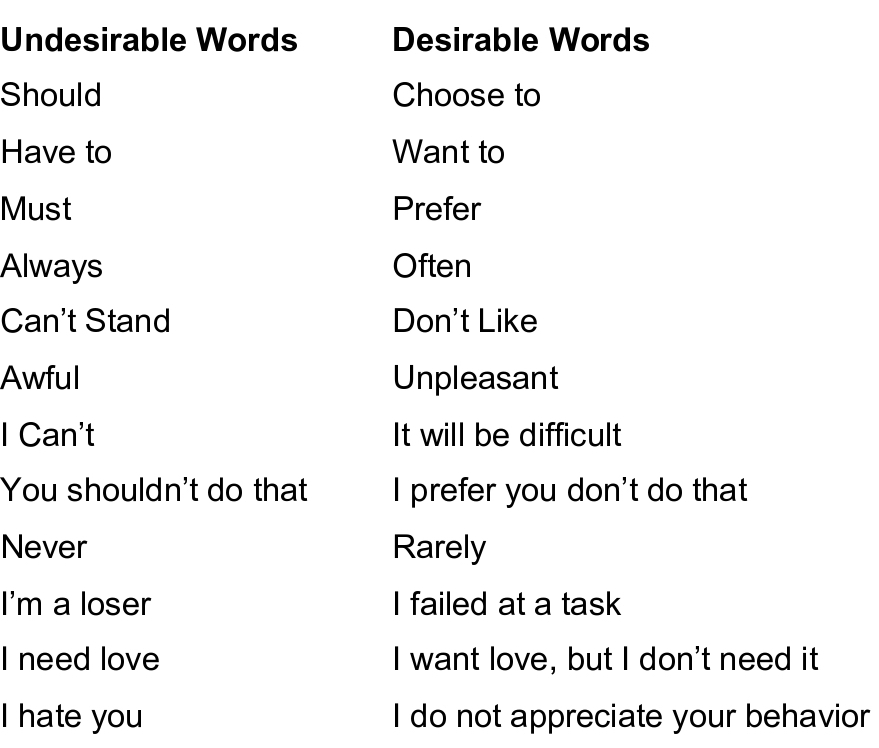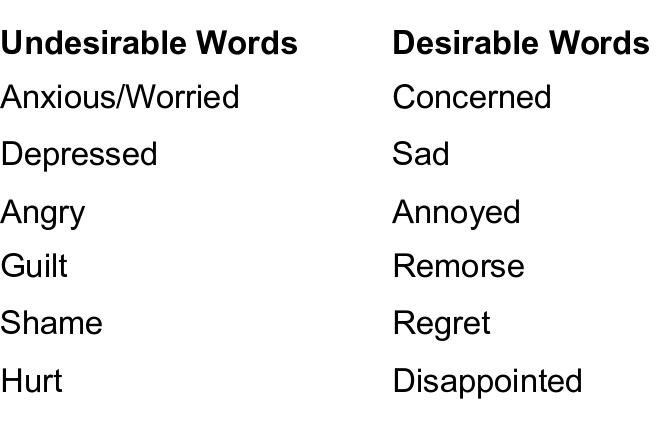 Image by Stefan Keller from Pixabay
Image by Stefan Keller from Pixabay
Approx. 5 minute read
Welcome to Part Eight in the series of Practical Tools for Improving Your Mental and Emotional Well-Being – Rational Living.
It is time to change the stories you tell yourself. Step away from subconscious emotional reactions, and instead hone your critical thinking skills. Looking at life decisions rationally (logically) instead of irrationally (emotionally) will change your life for the better.
Rational vs. Irrational Thinking
Definitions
A belief is a habitually repeated thought that you consider real or accept as true.
Rational thinking is beliefs/thoughts that:
- Are beneficial OR
- Make sense OR
- Assist you with your goals.
Irrational thinking is beliefs/thoughts that:
- Are not beneficial OR
- Do not make sense OR
- Do not help you with your goals.
Note the OR in the definitions. Only one condition needs to be true for the thought to be considered rational or irrational.
Based on prior articles in this series, what is beneficial to you can be described as what beliefs/thoughts support your desired authenticity – your way of “being”
Irrational/Rational example:
Irrational – I never do anything right.
Rational – I sometimes make mistakes.
The goal is to live life from a more rational state, rather than irrational. Here are two methods to help you move towards Rational Living.
Disputing Statements
One way to challenge irrational thoughts and beliefs is to dispute them. You can dispute an irrational thought with a rational question or rational statement.
Ex. 1 – Dispute with a question.
Irrational Thought: She is always angry with me.
Rational Dispute: Is she always angry with me, or only occasionally angry with me?
Ex. 2 – Dispute with an alternative rational statement.
Irrational Thought: She is always angry with me.
Rational Dispute: She occasionally gets angry at my behavior.
Recall two recent examples of your own irrational thinking. Use the method above to dispute irrational thoughts with a disputing question, and then use a disputing statement to transition to more rational thinking.
Changing Vocabulary
Your vocabulary is powerful. What you say out loud and to yourself, has a significant influence on what you believe. The more you say/think something, the more you believe it is true.
It is essential to recognize words and phrases you habitually use that are detrimental to your mental and emotional well-being. Once you are aware of these habitual words, you can practice changing them to ones that are more beneficial to your desired emotional state(s) and authenticity.
Examples:

It is also important to recognize the words you use to describe your emotional state. Your emotions are not to be ignored. They are a tremendous clue as to how you are experiencing life and where you are on the emotional scale.
When appropriate, you substitute emotionally charged words for ones with a more positive connotation.

Observe your internal and external words and phrases for a day or a week. Make note of the undesirable words and phrases (those that have a “below the table-top” emotional charge for you). Think of alternative words and phrases you could use to lessen the challenging emotional charge.
Here is an excerpt from my novel, The Shift Squad, where Neil (the instructor) and the students discuss how Stan (the character from the novel they are studying) chose to live – rationally or irrationally.
“Let me paraphrase what I heard . . .” Neil said. “Stan was doing what he believed was right based on a set of beliefs he inherited from society and family.”
“He caved,” Conner said, his chin resting on his arms splayed out flat on the desk.
“Were his choices rational or irrational?” asked Neil.
“Say what, Teach?” Tim asked.
“The Choice Comparison Matrix allows us to make decisions based on rational thinking. Rational thinking involves reviewing all available information to minimize emotionally charged choices,” Neil said, jotting on the board.

“Irrational thinking is the opposite.”

“Could we have an example, Mr. Robson?” asked Kat.
“Sure,” said Neil. His eyes wandered for a moment over the student’s heads. “Let’s say Stan has a belief about himself that he never does anything right. Is that belief rational or irrational, and why, based on the definitions?”
“But isn’t the word ‘never’ a generalization?” asked Anna.
Neil said, “Yes, it is. But we can take it further. Is what Stan believes rational or irrational?”
“It would be irrational, of course,” Conner said with a huff.
“Why?”
“Because it meets the definition,” Eddie said, pointing to the board. “It’s going to stop Stan from getting to his goals. And it doesn’t make sense.”
“But it might make sense to Stan,” said Tim.
“If he generalizes or ‘awful-izes’ it,” said Neil.
Kat’s face lit up. “Oh, I like that, Mr. Robson—’awful-izes’. That’s an easy one to remember. I can relate to that.”
Neil gave Kat a gentle smile. “I’m glad it resonates with you.” Neil returned his attention to the rest of the students. “Getting back to ‘I never do anything right’ . . . Is it a fact? Has Stan never done anything right? Has anyone you’ve ever known, always done the wrong thing?”
“No one does everything wrong, Mr. Robson,” said Kat.
“I agree, Kat. But let’s pretend someone has never done anything right. So, he has compelling evidence for the belief. But is it a helpful—rational—way of thinking for achieving his goals?”
“Are you saying only one of the conditions has to be true for the definition to be true?” asked Anna.
“Yes,” Neil said with a nod.
“But Stan didn’t know any better,” Kat said, her voice rising. “He was being the person he was raised to be.”
Mia’s lips made a flapping sound as she exhaled. “I’m with you, Kat. He was a victim of his programming.”
“We don’t know what we don’t know,” said Neil. “Here is a technique for increasing your self-awareness. It helps you reflect on your decisions and determine if they were rational or irrational. Ask yourself these questions.”

Rational Living is a choice. The first step is recognizing the manner in which you talk to yourself, your beliefs, and any undesirable outcomes. Reflect on these and then choose alternatives to attain a different result.
Keep challenging yourself with the question, “Do my beliefs and my words support my desired authenticity and emotional state(s)?” If they don’t, understand that you have the power to change them. Only you. Be empowered and change the way you think.
Here is the link to Part 9 in this series: CREATE a New Reality
For a free copy of a comprehensive PDF workbook on these tools and concepts, send me an email at [email protected].
I look forward to your comments and feedback.
~~~~~
For more techniques and tools for your mental and emotional well-being, check out my unique and engaging self-improvement novel, The Shift Squad.
I would like to thank SMART Recovery© for first exposing me to the concepts and tools in this article. They, and their program were there when I needed them the most.
 I write to inspire others to greater self-empowerment, authenticity, and improved emotional and mental well-being.
I write to inspire others to greater self-empowerment, authenticity, and improved emotional and mental well-being.
I am the author of the unique personal development novel The Shift Squad.
If you like what you read please subscribe for updates, share my articles with others, and add your comments below.
You can connect with me via email at [email protected] , on Facebook, Twitter, and LinkedIn.
Be Empowered. Make Authentic Choices And Enhance Your Quality Of Life.
